1. Light Independent Cycle (Calvin cycle)
1.1. Reactions
1.1.1. 2nd reaction of photosynthesis
1.1.2. Takes place in Stroma region of chloroplasts
1.1.3. Uses ATP and NADPH molecules (from light dependent reaction) to convert Carbon dioxide into sugars
2. Photosystem 1
2.1. Creating the high energy NADPH
2.2. Requires additional sunlight to re-energize electrons
2.3. (High energy electron) + (NADP+) + (H+) = NADPH
3. ATP synthase and electron transport chain
3.1. ATP synthase is a special protein that allows H+ ions to pass from the thylakoid into the stroma space.
3.1.1. When this happens ATP synthase acts like a rotating wheel (like a turbine in a hydroelectric dam) which attaches a phosphate to ADP making ATP
3.2. Remember that Adenosine Tri Phosphate (ATP) is a macromolecule that provides all cells with energy
4. Light Dependent Cycle
4.1. Reaction
4.1.1. 2 Steps
4.1.1.1. 1st
4.1.1.1.1. Change ADP into ATP (photosystem II)
4.1.1.1.2. This happens by using proteins in the electron transport chain to generate ATP from ADP
4.1.1.1.3. Sunlight starts process
4.1.1.1.4. Electon transport chain pulls H+ ions from stroma into the thylakoid
4.1.1.1.5. These H+ ions are then sent through ATP synthase to change ADP into ATP
4.1.1.2. 2nd
4.1.1.2.1. Transport high-energy electrons into stroma changing NADP+ into NADPH (photosystem I)
4.1.1.2.2. Again, Sunlight is used to re-energize electrons
5. (Sunlight + Water + CO2) = (Energy + O2)
5.1. Energy is in the form of ATP, and Sugar
5.1.1. Summary:
5.1.1.1. Light dependent reaction takes in sunlight and water and creates ATP (photosystem II) and NADPH (Photosystem I)
5.1.1.2. Both photosystems involve high-energy electrons
5.1.1.3. ATP and NADPH are then passed on to Light Independent Cycle (Calvin cycle) to make sugar
6. Chloroplasts
6.1. Where photosynthesis occurs.
6.2. Are an organelle that contains a pigment known as chlorophyll.
6.3. Contain structures called thylakoids. Stacks of thylakoids are referred to as granum.
6.4. Fluid portions of the chloroplasts are known as stroma.
6.5. Chloroplast - Calvin cycle
7. Light waves and chlorophyll
7.1. Chlorophyll is a pigment that collects sunlight that travels in the blue-violet and red spectrum.
7.2. Chlorophyll comes in an "a" and "b" form.
7.3. Electromagnetic Spectrum
7.4. Electromagnetic Spectrum
8. Photosystem 2
8.1. Generating ATP
8.1.1. Sunlight activates Electrons (H2O)
8.1.2. Electrons are passed through a series of proteins know as the electron transport chain
8.1.3. The electron transport chain provides the energy needed to build up a concentration of H+ ions (from stroma) that are used by ATP synthase to change ADP into ATP
